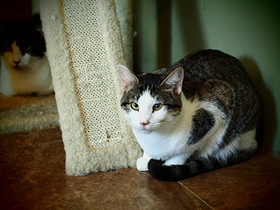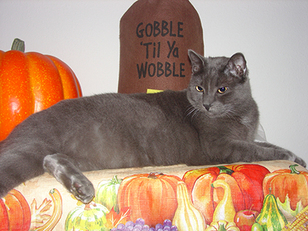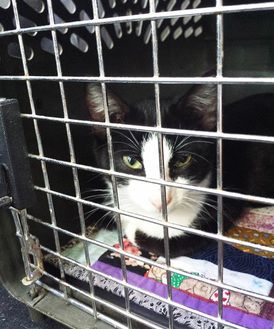
There are two kinds of kitties in the wide and wacky world of cats. The “Absence makes the heart grow fonder” feline and the “Out of sight, out of mind” minx.
What kind is yours?
Whether you’re gone for an hour or gone for the day, the former is purr-sonified by clinging climbers and shameless shadows, and the latter by snooty snubbers and punishing pouters.
How long, then, should a cat be left home alone? Most experts agree that pet parents should never be away longer than overnight without someone checking in on their charge. Never was a twist on the old adage truer: When the folks are away, the felines will play. Accidents can and do happen, and whether minor or major, the consequences may range from nominal to fatal.
While cats spend much of their day catnapping, without human companionship or mental stimulation, they’re easily bored. To prevent both boredom and separation anxiety, ensure that they’re effectively entertained. A cat tree allows your cat to climb, stretch out, curl up, and look out the window. A video of soaring birds, buzzing bees or scampering mice will keep her spellbound for an hour. Treats cannily hidden throughout your home will lure her into a kitty cat scavenger hunt and deter her from clawing the furniture or shredding the curtains. Puzzle feeders not only challenge her brain, but serve her dinner as well.
For overnight trips or those of a day or two, swap “sitting” services with highly reliable and feline friendly family members or friends. For trips lasting several days, hire a professional pet sitter to be your eyes and ears while you’re gone. To visit your cat daily and engage her in play, clean and replenish her food and water bowls, clean and refill the litter box, and check off any household chores (from bringing in the mail to watering the plants) you may have listed.
Although not overly fond of change, finicky felines may, at times, have no other choice than to embrace it: temporarily. Research and pinpoint the most highly recommended and reliable boarding kennel in your area and visit it ahead of time. Peruse the general layout and actual, individual accommodations. Ask if your particular brand of cat food is included in the daily rate or if you should supply it yourself. If your kitty takes medications of any kind, be specific about the doses and dosing schedule. Question them about their emergency procedures should the animals have to be evacuated. Once your decision is made, provide them with a comprehensive a list of contacts, instructions and information, then leave, reassured that your furry family member will remain safe and secure until your return.
As to what kind of kitty will greet you upon your return? Only you know your kitty best.












 RSS Feed
RSS Feed